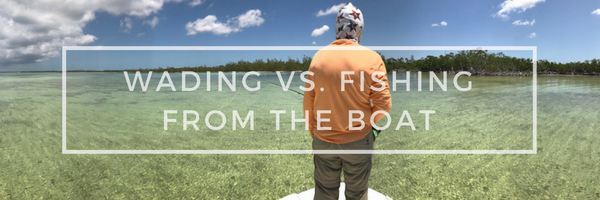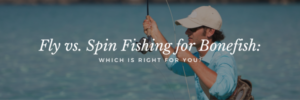There’s obviously more than one way to catch a bonefish.
From poling (fishing from the boat), to wading, to simply standing silently on the boat, watching for your chance to make the perfect cast, there are numerous strategies that you can use to pursue this beautiful, stealthy, and incredibly intelligent species. When chasing bonefish on foot you have the benefit of being directly connected to their environment, along with the challenge of making quiet steps that create minimum, water disturbance. At the right time and in the right conditions, wading can be a very effective way to sneak up on your prey. Poling, however, is an amazing bonefish practice for beginners, and one that will let you use your boat to the greatest advantage.
Poling Is A Team Effort
Unlike wading, poling is hardly a solo effort. With poling, the angler and the guide work seamlessly together. While the angler remains at the bow, ready to cast when the timing is right, the guide stands on the poling platform and carefully rotates and positions the boat to provide the best casting opportunities. With his elevated vantage point, the guide additionally has an enhanced ability to both spot and pursue bonefish on behalf of the angler.
Beginners Get Amazing Practice With Poling
Given the element of teamwork, poling is great practice for those who are new to bonefishing. This gives anglers a chance learn how to truly listen to and coordinate with their guides. Moreover, the guide can strategically position the boat to make efficient casting much easier.
Poling Helps When Flat Bottoms Are Soft
Soft, muddy, flat bottoms make it extremely unpleasant to chase bonefish on foot. Attempting to tread quietly through soft piles of sand, overgrowths of turtle grass, or mud, is hardly a good time. When flat bottoms are soft, a poled boat will make it infinitely easier to make your way through the flats. Poling is also the preferred method of pursuit when the water is especially deep.
Choose Wading In Windy Conditions
Wading also has its advantages. For one, it’s ideal for people who enjoy the sense of hunting while bonefishing. Ultimately, it’s a much more intimate experience that puts anglers directly in the environment of their prey. From a very practical and functional standpoint, however, wading is also the best method of pursuit when conditions are especially windy, which is often the case on the flats. At these times, heavy winds can make it far more difficult to control and position the boat correctly, whereas waders with good balance, good boots, and a knack for moving soundlessly can easily position themselves for accurate casting.









